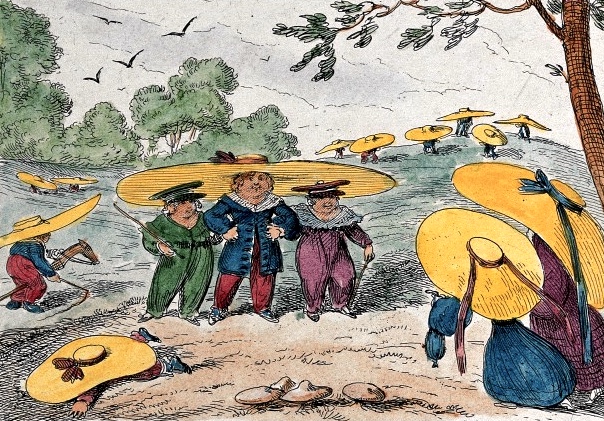How data and connectivity are changing the nature of play
Now that technology has made its way into the playroom, there are a lot of important questions we should be asking.
 Chidren at play in the fields (source: Wellcome Library)
Chidren at play in the fields (source: Wellcome Library)
Playing is how we learn. Through play, we develop large and fine motor skills, refine language and social interaction, and discover important facts about everything from the cycle of life and death to the laws of physics. When we play, we test the world around us, and share and grow.
But play is changing because it’s now filled with technology. In the coming months, I’m going to be looking at how data and connectivity are changing toys and the very nature of play. I’ll be talking to designers, inventors, technologists, and educators, and publishing the results in a report for O’Reilly Media.
Here’s my thinking so far:
Until very recent times, play was a purely tangible, real-world experience. Almost every adult alive has built a tower of blocks, climbed something, chased another person, used a skipping rope, and put together a puzzle. We all know the rules of tag and hide and seek. Some of our fondest memories include creative and imaginative play. We were pirates. We were princesses. We were explorers in a new, exciting land, limited only by our own imaginations and the loving cry of parents calling us home for dinner.
Toys are a huge part of our lives when we’re children, and they help define us. Ask veterinarians how many stuffed animals they had as a child, or artists how many different types of paper and crayons and paint they tried, or musicians what the first real instrument they owned was. You will see a light come into their eyes when they reflect on how huge a part those “toys” played in helping them understand their place in the world.
The impact toys and play have on our outcome as individuals, and as a society, is enormous. Now that technology has made its way into the playroom, the way children play is different from what it has been throughout most of human history.
It’s rumored that children were used to test the intuitiveness of the first touchscreen iOS. Nowadays, it seems as though children wade into technology naturally, like fish into water, while adults remain cautiously on the shore barely dipping in their feet.
When you consider the fact that toys are getting smarter, and that the way children interact and play is changing, there are a lot of important questions we should be asking.
How will “smart” toys change children’s expectations of the world? How will things like talking teddy bears, VR experiences, programmable robotics, and the world of instant gratification offered by a plethora of digital experiences impact childhoods and shape our future world? What data will be harvested from toys and games that “learn” with our child, and how will it be used?
As children, we saw possibilities in a box full of sand. The sandbox in which our children play is made of bits and bytes and colors and sounds. What possibilities will they see?
How will a child’s ability to interact, modify, and teach “smart” toys provide us with new insights into the impact of play, childhood development, and the direction of tomorrow’s connected society?
We’re at a fundamental shift in what it means to play, and I’m looking forward to exploring how data and connectivity are changing play, toys, and children forever.
